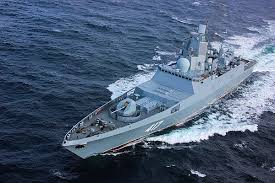Pakhomov Evgeny
Afghanistan can rely on “three pillars” in its reconstructi-on – ferrous, non-ferrous and rare-earth metals, a-nd India has been closely looking at the deposits of this country for a long ti-me. A source close to the Ministry of Trade and In-dustry of India told me a-bout this in an interview, on condition of anonymity.
“However, the coming to power in Kabul of the radical Taliban movement has so far postponed the implementation of all such projects for an indefinite period,” my interlocutor said. “Although the Taliban are also well aware that Afgha-nistan has unique deposits of copper, iron, rare earth metals. India has been eyeing them for a long time, primarily the Hajigek iron ore deposit in Central Afgh-anistan, because our region does not have large reser-ves of iron,” he added…
The field was discovered in the foothills of the Hindu Kush ridge by Soviet geologists who actively worked in Afghanistan in the 1960s – 1980s. At that time, the specialists were struck by the very high quality iron ore. The explored reserves amounted to at least 500 million tons, and the forecasted reserves were two to four times more. Relatively not far in the neighboring area, they also found depo-sits of coal, which is necessary for ferrous metallurgy.
New Delhi announced its readiness to take part in the extraction of Hadjigek’s iron ores back in 2011 – during the reign of President Hamid Karzai in Afghanistan. The project was estimated at $ 11 billion. The Afghan government then transferred four of the five areas of the field to a consortium of seven Indian companies led by the Steel Authority of India (SAIL), and another was received by a Canadian company.
“India is implementing a transport corridor through the Iranian port of Chab-ahar, which opens India ac-cess to Afghanistan bypassing Pakistan. New Delhi intends to develop ties with the Central Asian states, Russia and Europe through this port. But it was planned that one branch of this transport corridor was to go to Hajigek and the ore had to go to Indian metallurgical plants, “my source said.
He noted that the implementation of such a project requires sufficient time and large initial investments for the construction of roads, infrastructure, resettlement of local residents from the development area. But in an unstable country, these processes were constantly postponed. “And today the main question is what the Taliban will do with the deposits and who will agree to deal with them. But there is no doubt that they will try to use attractive deposits to improve the attitude towards themselves in the world,” the source said.
Copper treasure
The phenomenon of Afghanistan is that this country has never been a full-fledged colony of any of the Western countries, and therefore Western mining companies have never worked here. In this regard, a situation unique for the whole of Eurasia has developed – the Afghan fields by the 21st century have remained practically untouched. It is not surprising that when geologists finally came to this country, many discoveries awaited them. One of them in the mid-1970s was the Aynak copper deposit, just 40 kilometers from Kabul. It turned out that this is the largest copper deposit in Eurasia – more than 11 million tons of explored reserves were discovered.
And that is not all. Pegmatite ores were discovered in the east of the country. As a professor at the Moscow Geological Prospecting University Georgy Pilipenko, who worked in Afghanistan for many years, told me a few years ago, these ores contain a lot of precious stones: rubies, beryls, as well as kunzites and giddenites that are almost unknown in Russia. “But the main thing is that these pegmatite fields are a source of lithium, beryllium, tantalum, niobium. These are rare metals, without which it is impossible to imagine aircraft and rocketry, other science-intensive industries,” said the professor.
“Of course, we know about these deposits. But Aynak went to the Chinese, and the mass development of pegmatites has not begun,” my Indian source said.
Indeed, back in 2007, China Metallurgical Group (MCC) received permission to work here. However, the Chinese miners could not agree with the local authorities on the terms of the contract. In addition, archeology intervened: the ruins of an ancient Buddhist city were discovered right above the deposit, which also delayed work – excavations are ongoing on site.
But the main problem was security – the incessant war constantly interfered with work, the Taliban regularly attacked workers on Ainak. For example, in 2020, Taliban fighters attacked a copper mine there, killing eight people and injuring five more. Unsurprisingly, the work hasn’t gotten far.
“Emerald in the mouth of a lion”
But there are deposits in Afghanistan that are being actively developed, albeit in a rather artisanal way. We are talking about the famous Afghan lapis lazuli and the emeralds of the Panjshir gorge.
Lapis lazuli from the Sary-Sang deposit has been known since antiquity – it was found even in the tombs of the Egyptian pharaohs. An amazingly beautiful stone that is actively used by jewelers around the world. It is called the “night sky” here because of the blotches of golden pyrite, thanks to which the local lapis lazuli really seems like a piece of the night sky with a scattering of golden stars.

But the emerald deposit in Panjshir was discovered relatively recently – in the 1970s. Even the name of a man who in 1977 literally stumbled on a bright green stone in the mountains is known – Muhammad Nagin.
Panjshir Gorge (translated as “Five Lions”) for ma-ny years was the fiefdom of the famous Afghan field commander Ahmad Shah, better known by the nickname Masud the Lucky (also often called the Lion of Panjshir). And the lion held firmly to the precious green stones, establishing contacts with Western jewelry houses. These stones a-re said to have become one of the reasons that allowed Massoud to turn the poor mountain gorge into an impregnable fortress – first against Soviet troops, and then against the Taliban (he had no shortage of funds). It is no coincidence that now the opponents of the Taliban, including Ahmad Shah’s son, Ahmad Masud, are again trying to gain a foothold in this gorge.
As a very young journalist, I managed to get into the Hench mine in the late 1990s, the main emerald mine of Panjshir. The slope of the mountain was covered with narrow deep wells-holes, in which local prospectors were looking for stones. The production is barbaric: they put a tolnen saber up the mountain and blow it up, and then they look at the fragments of the rock to see if there is a green stone there. This method crumbles and spoils emeralds, but the local miners did not have modern equipment.
As one of the workers explained to me then, only their own people are allowed here, on the condition that they paid the local authorities the required bribe. And they were not going to let someone outsider, “especially these Pashtuns-Taliban” – even though the Taliban were also in power in Kabul at that time.
“Yes, this is a problem – in Afghanistan, every local leader considers everything that is in the territory under his control to be his property. The central government there is historically weak. And how is the development of deposits here?” – asks an employee of the Indian Ministry of Trade and Industry.
But the main question is how the Taliban will manage the Afghan wealth. Will they finally be able to start modern mining, or copper and iron will remain in the ground, and emeralds will fuel a new war.






